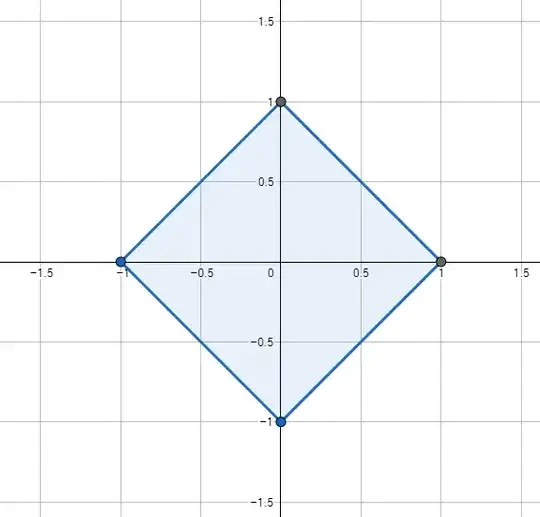The claim is indeed correct.
The only really solid proof I can think of uses Alexander Duality from algebraic topology, and I suspect that this is not likely to be satisfactory to you, as you may not know that theorem or have ever studied topology.
If you're willing to say that the curves $a$ and $b$ are not merely "continuous" but "nice" (e.g., neither one is a space-filling curve, for instance, and neither one is self-intersecting (like the letter $\alpha$), then there might be a simpler proof, but even in this simpler case, I cannot really think of one.
Well...here's a kind of proof, assuming you know how to compute integrals. Put the square with $A$ at the origin of the plane, $B$ to the right, along the $x$ axis, and $D$ above, on the $y$ axis. Now add to the curve $b$ the 3/4 arc of a circle from $D$ to $B$, as in this picture:
You can now take the entire blue curve, which is a loop, agree to traverse it counterclockwise, and compute its winding number around the point $A$ by writing down an integral (see Wikipedia for what integral defines the winding number). Because all along the curve $b$, the angle from $A$ is in the first quadrant, it's not too hard to show that this winding number is $1$.
On the other hand, if you compute the winding number around the point $C$, it turns out to be $0$, for similar reasons.
For each point $u$ of the curve $a$, you could similarly compute the winding number around $u$. Then you have to show that if $u$ is never a point of $b$, that this winding number is a continuous function of the location of $u$. That requires some calculus, probably Leibniz' theorem.
Finally, suppose that curves $a$ and $b$ do not intersect. Then the winding number $w(u)$ is a continuous function of $u$ as $u$ moves from $A$ to $C$, but this continuous function is $1$ at $A$ and $0$ at $C$, and takes on only integer values. That is a contradiction, and hence the assumption that they don't intersect must be wrong.
This proof relies on $b$ being a nice enough curve that you can compute the winding number using integration; I'm not certain, but I suspect that "continuous" is probably enough, but I've been fooled before. It also depends on the continuity of integrals like the winding number with respect to the parameters like the center point around which the integral is computed -- that's messy calculus.
Still, this is at least a sketch of a solid non-algebraic-topology proof.
** Post-comment addition **
To give an algebraic-topology based proof sketch, consider the (filled in) square as a disk in the plane, and $A, B, C, D$ as four points on the boundary circle, say at $\theta = 0, \pi/2, \pi, 3\pi/2$.
Treat this disk as the upper hemisphere of $S^2$. Take the arc $a$ from $A$ to $C$, and adjoin to it the great semicircle containing $A, C,$ and $S$, where $S$ is the south pole. Call this set --- which is just the image of a circle mapped to $S^2$ --- by the name $X$, and call its complement $Y$.
Then Alexander duality tells us that $H^{n-q-1}(Y)$ is isomorphic to $H_q(X)$, where $n = 2$ is the dimension of the sphere in which $Y$ lives, i.e., that
$$
H^{q-1}(Y) = H_q(X)
$$
and where $H$ denotes reduced homology or cohomology.
Now $H_1(X)$ certainly contains a copy of $\Bbb Z$ corresponding to "go once along $a$ and then continue along the great semicircle, returning to where you began." That means that $H^{0}(Y)$ contains a copy of $\Bbb Z$, which is to say that the non-reduced cohomology of $Y$ contains two copies of $\Bbb Z$, hence that $Y$ has two connected components. And that's really the essence of the thing.
I suspect that the version of Lefschetz duality that works on triples rather than pairs could do this somewhat more simply, but I don't have the wit to see how.

